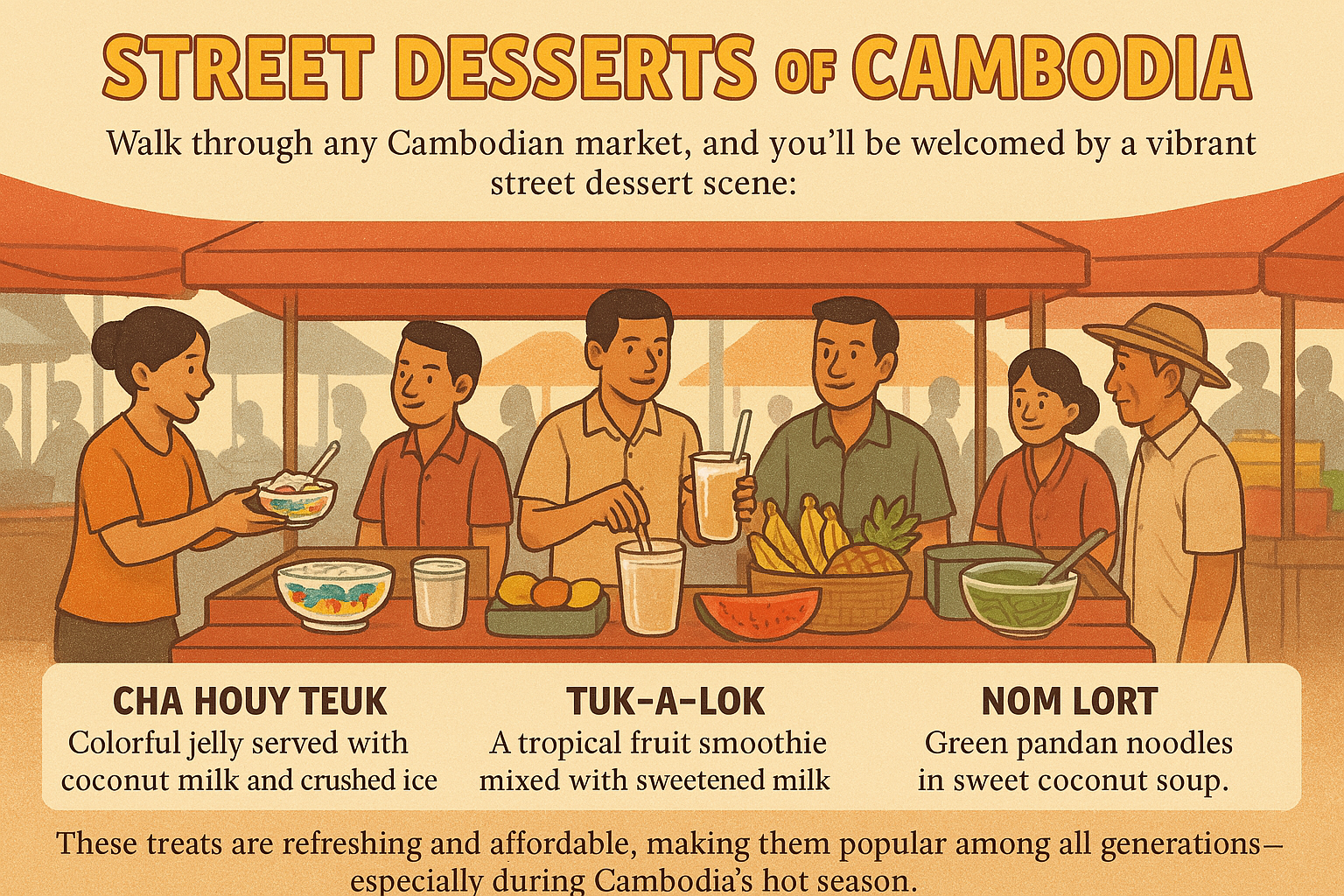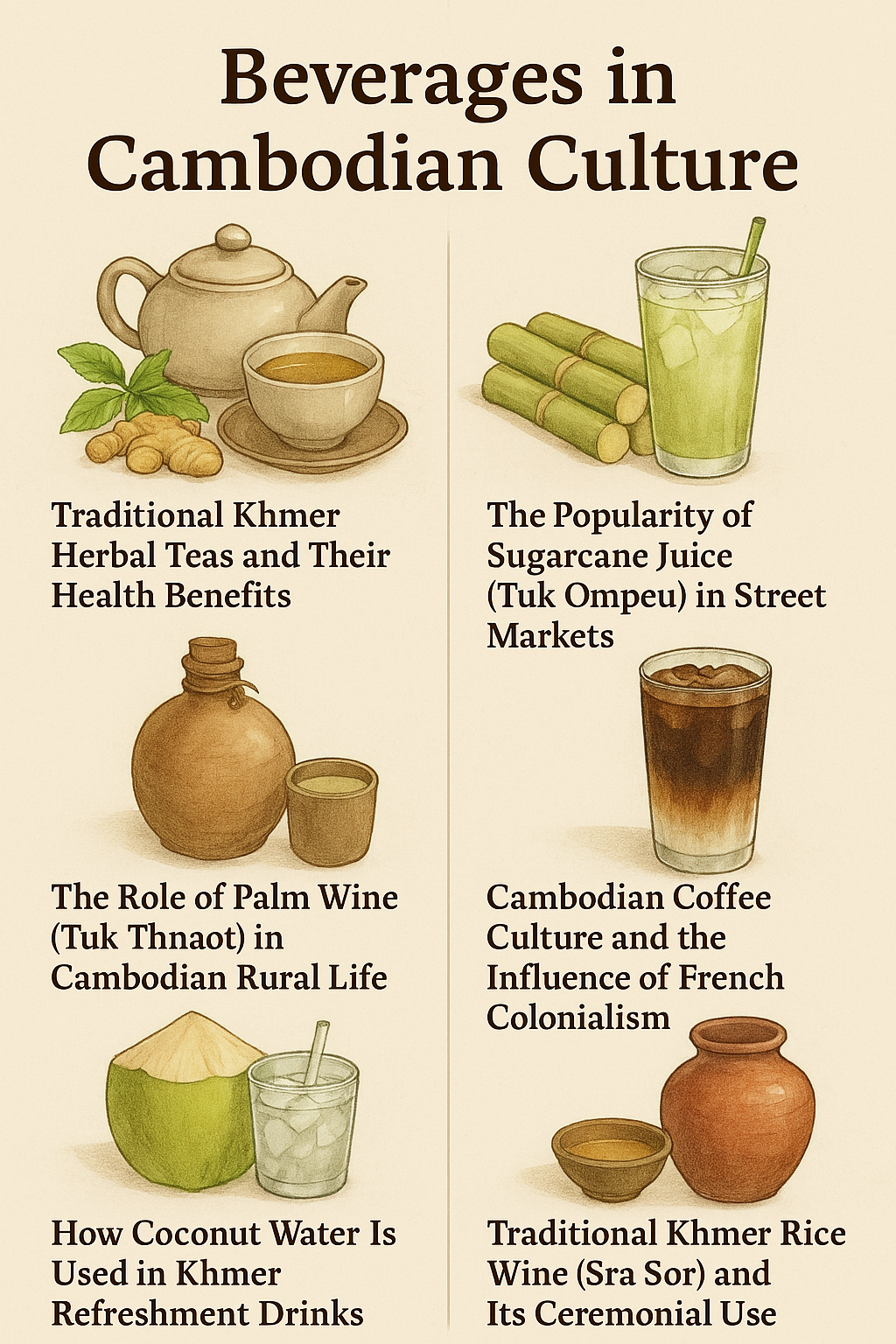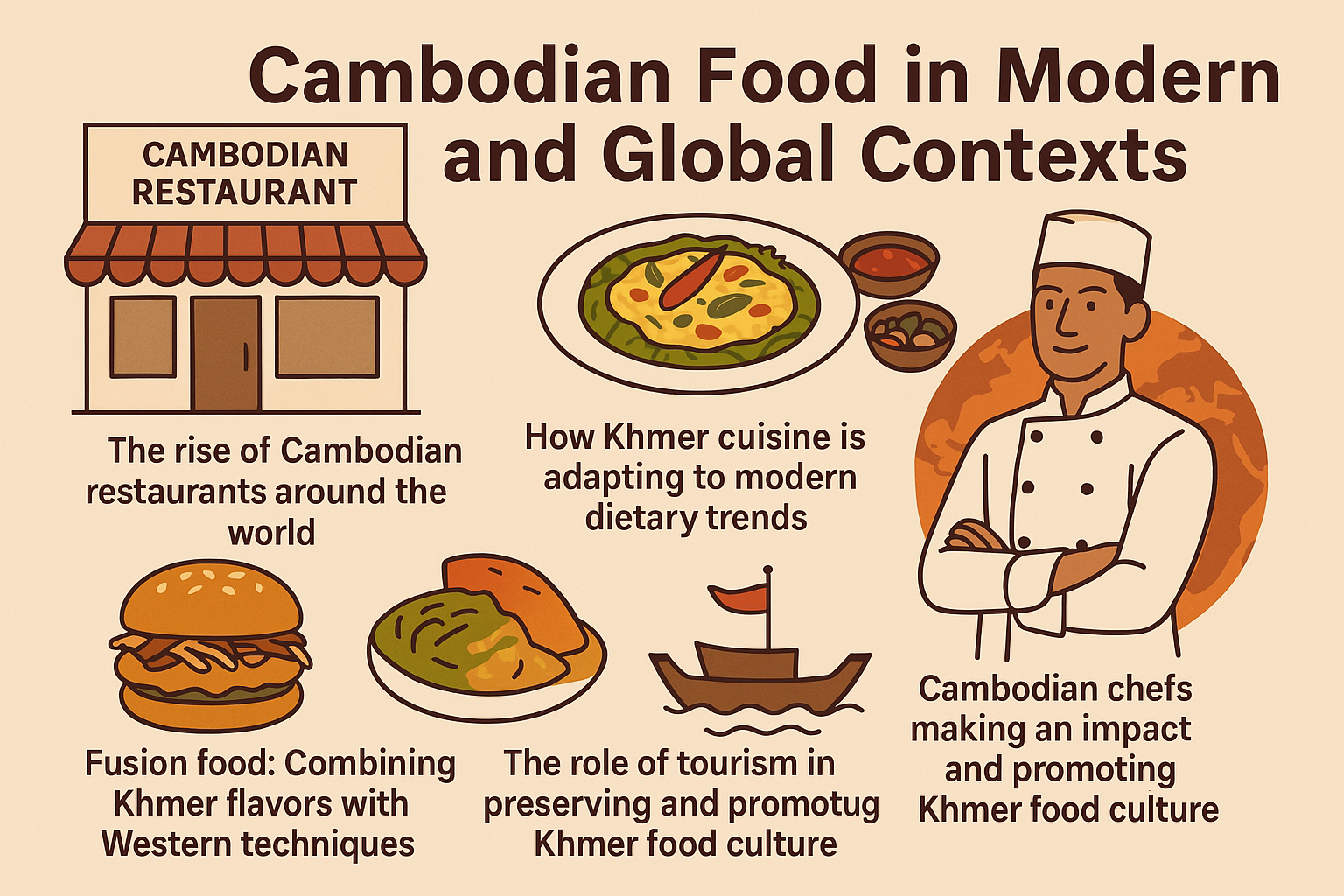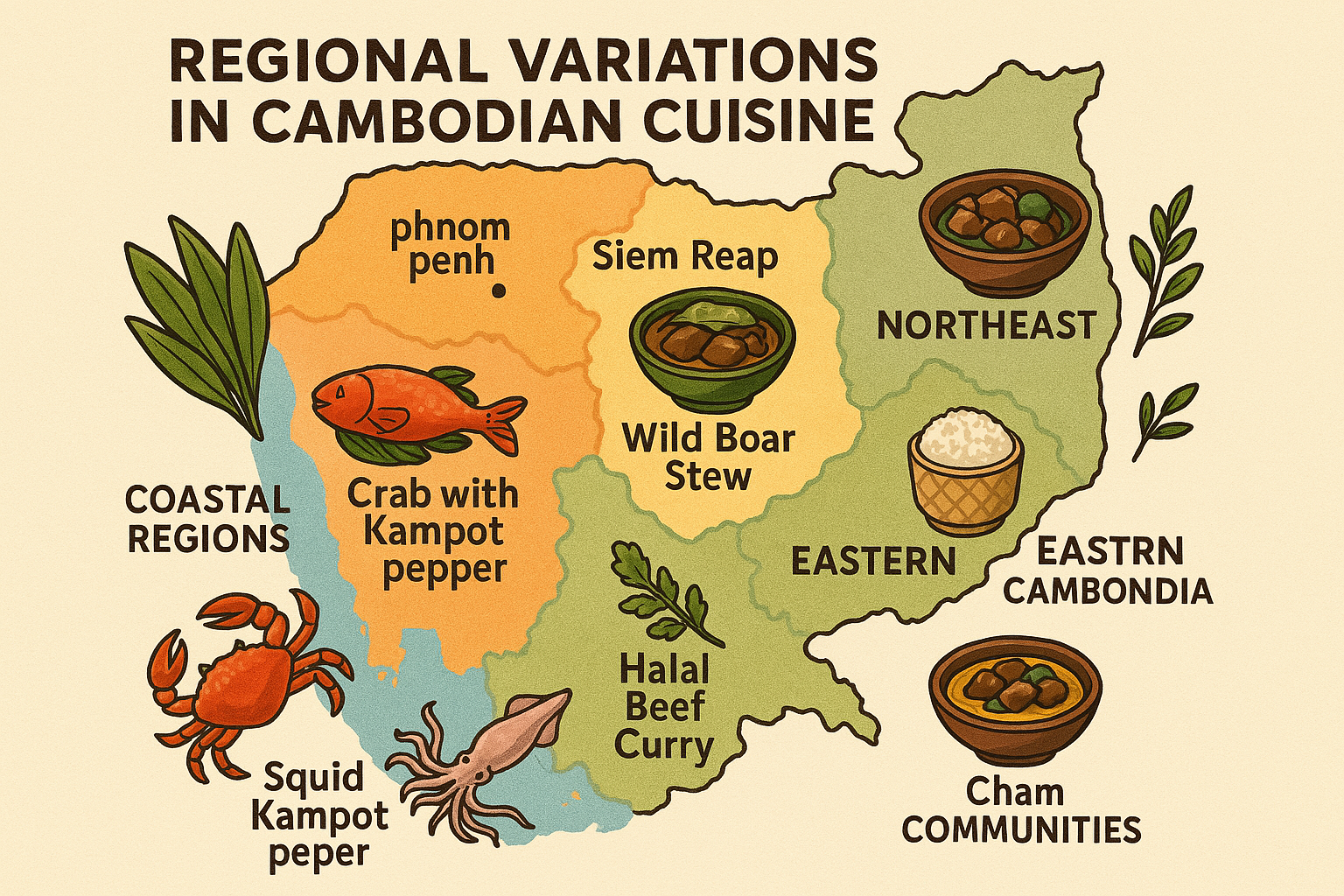Cambodian desserts offer a sweet lens into the soul of Khmer culture—layered with tropical flavors, religious traditions, and community spirit. While coconut milk, palm sugar, and sticky rice provide a consistent foundation, the variety of sweets in Cambodia is astonishing. Let’s explore what makes Khmer desserts so culturally and culinarily special.
1. Coconut, Palm Sugar & Sticky Rice: The Holy Trinity of Khmer Sweets
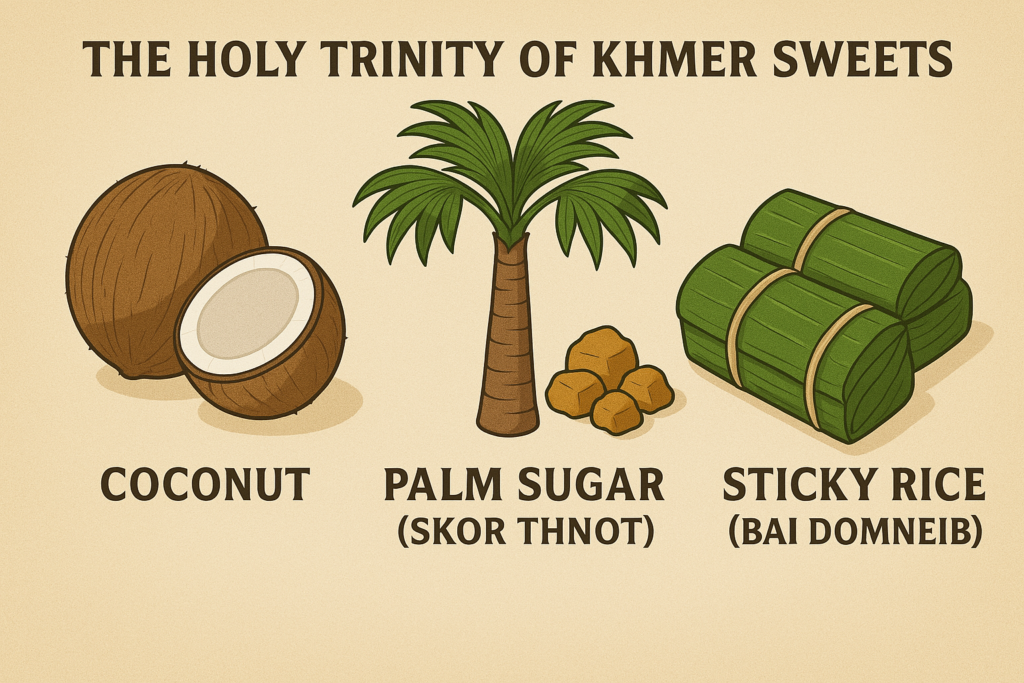
In Khmer culinary tradition, three ingredients form the base of most desserts:
- Coconut: Grated, juiced, or creamy, coconut infuses flavor and richness.
- Palm Sugar (Skor Thnot): Tapped from Cambodia’s iconic sugar palm trees, this sugar offers a mellow, caramel-like sweetness.
- Sticky Rice (Bai Domneib): Steamed in banana leaves or cooked in sweetened coconut, it’s both a texture and flavor carrier.
These natural, locally sourced ingredients reflect Cambodia’s connection to the land and seasonal cycles.
2. 🍬 Beloved Traditional Khmer Desserts

Cambodia’s traditional sweets—known as “Num” (នំ)—are more than confections. They are stories wrapped in banana leaves, prepared with love, and steeped in centuries of cultural meaning. Using humble, natural ingredients such as coconut, palm sugar, and sticky rice, Khmer desserts embody a harmony of flavor, symbolism, and craftsmanship. Whether steamed, fried, or chilled, each dessert carries the warmth of home and the spirit of celebration.
🍃 Iconic Cambodian Sweets
Num Sangkhyā (នំសង់ខ្យា) – A carved pumpkin filled with coconut custard, steamed until tender and sliced for serving. Often made for monks during Buddhist holidays or as a grand offering.
Num Ansom (នំអន្សម) – A classic cylindrical rice cake wrapped in banana leaves, filled with either banana (sweet) or pork and mung bean (savory). Symbolizing harmony and family unity, Num Ansom is traditionally made during Khmer New Year and Pchum Ben.
Num Kom (នំគម) – Known as the Cambodian rice cake, Num Kom is a glutinous rice ball filled with sweet coconut and palm sugar, then wrapped in banana leaves into a pyramid shape and steamed. It is traditionally used in wedding ceremonies to symbolize female purity and fertility.
Num Krouch (នំក្រូច) – Deep-fried glutinous rice balls with molten palm sugar and sesame filling. Crunchy on the outside, chewy and sweet inside—Num Krouch is a nostalgic favorite found in local markets.
Chek Ktis (ចេកខ្ទិះ) – Sliced ripe bananas cooked slowly in coconut milk, sometimes with sago pearls, offering a creamy, slightly salty-sweet comfort dish served warm.
Num Ple Aiy (នំផ្លែអាយ) – Also called “floating rice balls,” these are sticky rice dumplings filled with palm sugar, rolled in shredded coconut. Popular during birthdays and celebrations, they’re soft, chewy, and fun to eat.
Num Chak Chan (នំចាក់ច័ន្ទ) – A layered steamed dessert made with coconut milk, rice flour, and natural colorings like pandan and butterfly pea flower. Each layer represents patience, progression, and spiritual balance.
Num Krouk (នំគ្រក់) – Not to be confused with the fried version, these mini coconut rice cakes are grilled in cast-iron molds, resulting in a soft, custardy center and crispy outer shell. Usually made with coconut milk, rice flour, and sometimes chopped chives or sweet corn for contrast. Served hot and often sold in pairs—one inverted over the other.
3. Sacred and Sweet: Desserts in Khmer Celebrations
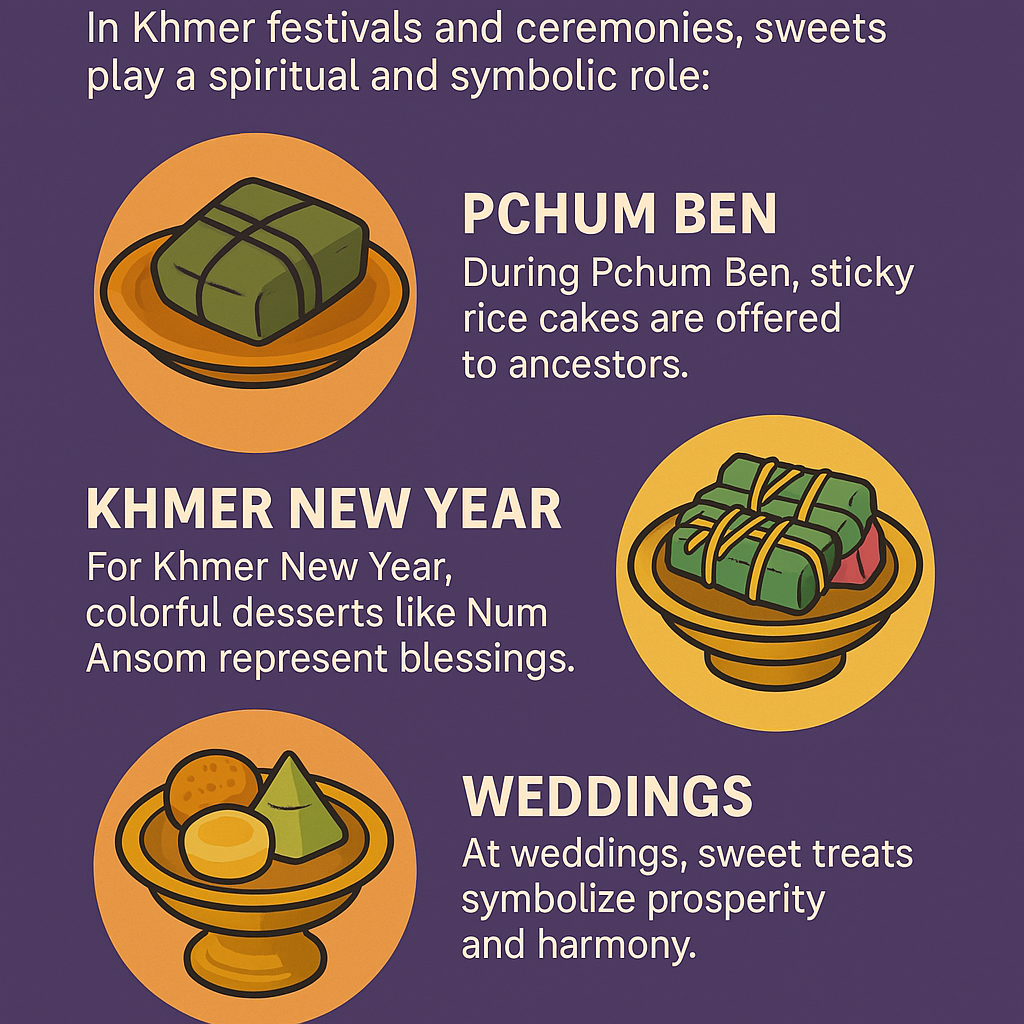
In Khmer festivals and ceremonies, sweets play a spiritual and symbolic role:
- During Pchum Ben, sticky rice cakes are offered to ancestors.
- For Khmer New Year, colorful desserts like Num Ansom represent blessings.
- At weddings, sweet treats symbolize prosperity and harmony.
Desserts are not just food—they’re offerings, blessings, and expressions of gratitude in Buddhist and animist practices.
🎨 Infographic 3: “Sweets in Cambodian Celebrations”
Visual: Table of festivals with matching traditional desserts and their symbolic meanings.
4. Street-Style Cambodian Desserts and Drinks

Walk through any Cambodian market, and you’ll be welcomed by a vibrant street dessert scene:
- Cha Houy Teuk – Colorful jelly served with coconut milk and crushed ice.
- Tuk-a-lok – A tropical fruit smoothie mixed with sweetened condensed milk.
- Nom Lort – Green pandan noodles in sweet coconut soup.
These treats are refreshing and affordable, making them popular among all generations—especially during Cambodia’s hot season.
5. Traditional vs. Modern: The Evolution of Khmer Sweets
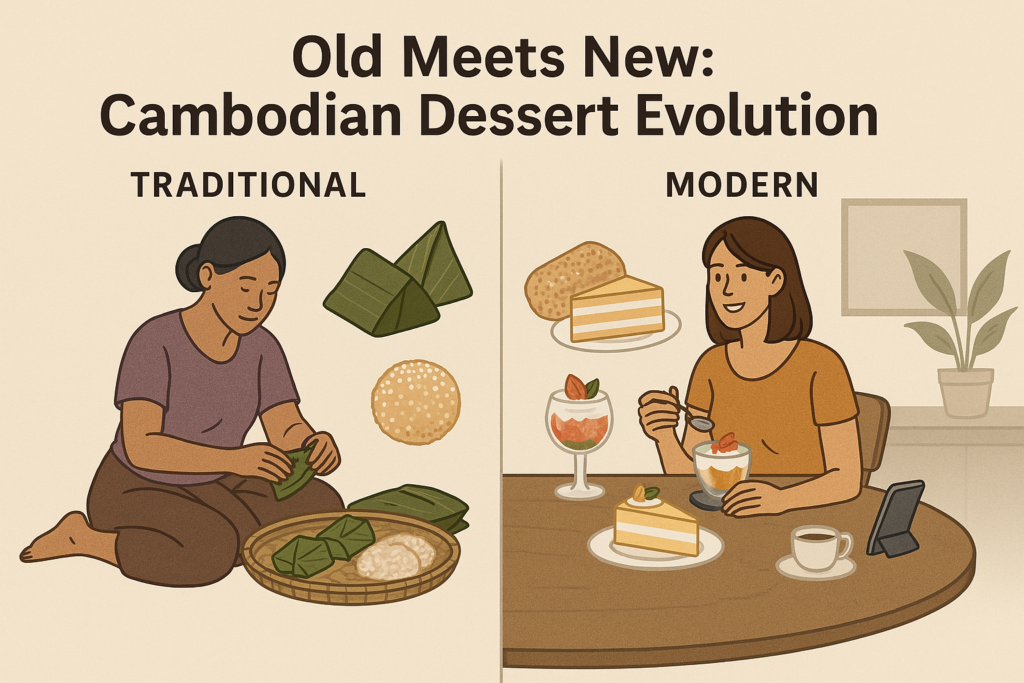
While traditional sweets remain beloved, modern variations are emerging:
- Western-style pastries infused with coconut and palm sugar
- Fusion cakes using sticky rice and tropical flavors
- Desserts served in cafés with Instagrammable presentations
The younger generation is bridging the past and future, preserving taste while experimenting with new formats.
6. Khmer vs. Thai & Vietnamese Desserts: What Makes Them Unique?

While Cambodia shares ingredients and techniques with its neighbors, Khmer desserts have distinct characteristics:
- Less sweet than Thai desserts
- More rustic and earthy compared to the refined textures of Vietnamese sweets
- A strong presence of palm sugar and coconut, used subtly
- Symbolic uses in Buddhist rituals and seasonal festivals
These differences make Cambodian sweets a unique experience worth celebrating globally.
Final Thoughts
Cambodian desserts are more than delightful snacks—they are a living archive of Khmer history, spirituality, and flavor. Whether wrapped in banana leaves or served chilled at a bustling market, these sweets offer a delicious gateway into Cambodia’s cultural richness.

